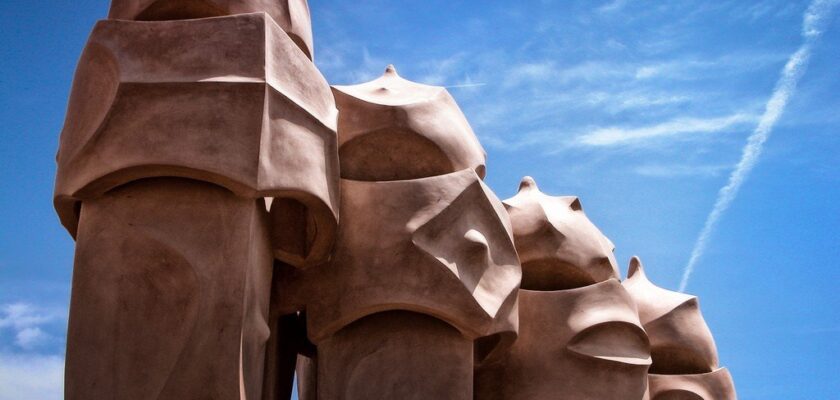Casa Milà
Casa Milà is one of Antoni Gaudi’s striking creations in Barcelona. Located at the intersection of Passeig de Gracia Boulevard and Carrer de Provensa Street, the landmark attracts attention with its smooth curves, its imitation of the marine element, and its delicate balance between lightness and bulkiness. Barcelona can be called the creative platform of the famous architect. The author’s imagination and skill allowed him to create a building that seems to move and breathe.
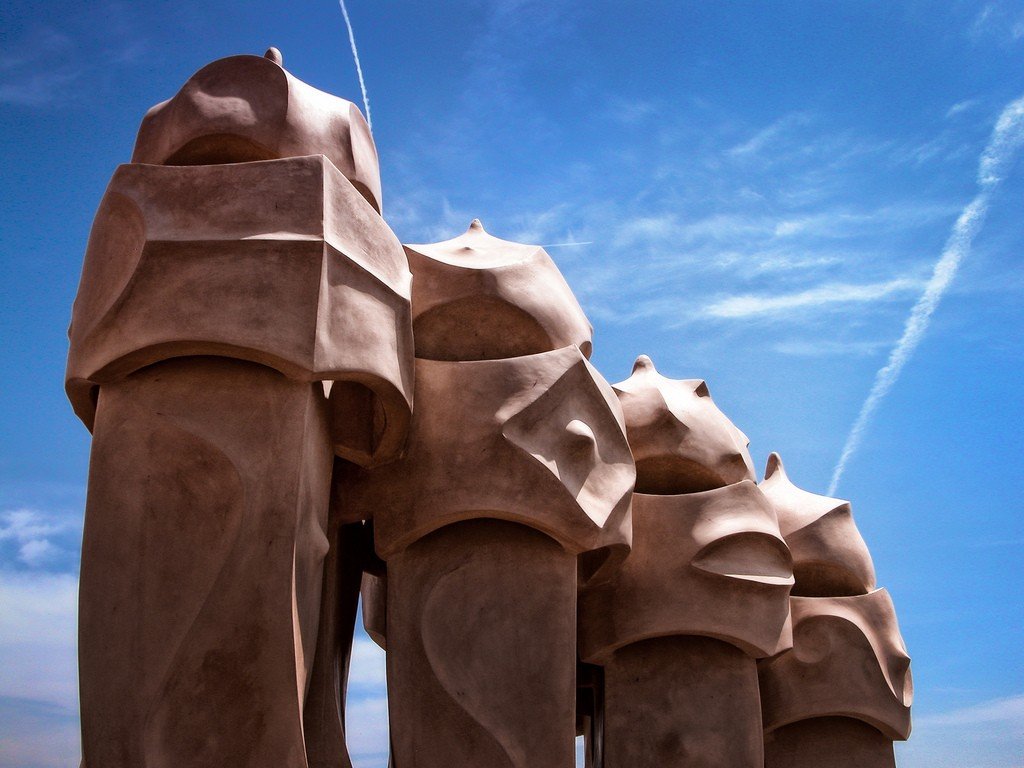
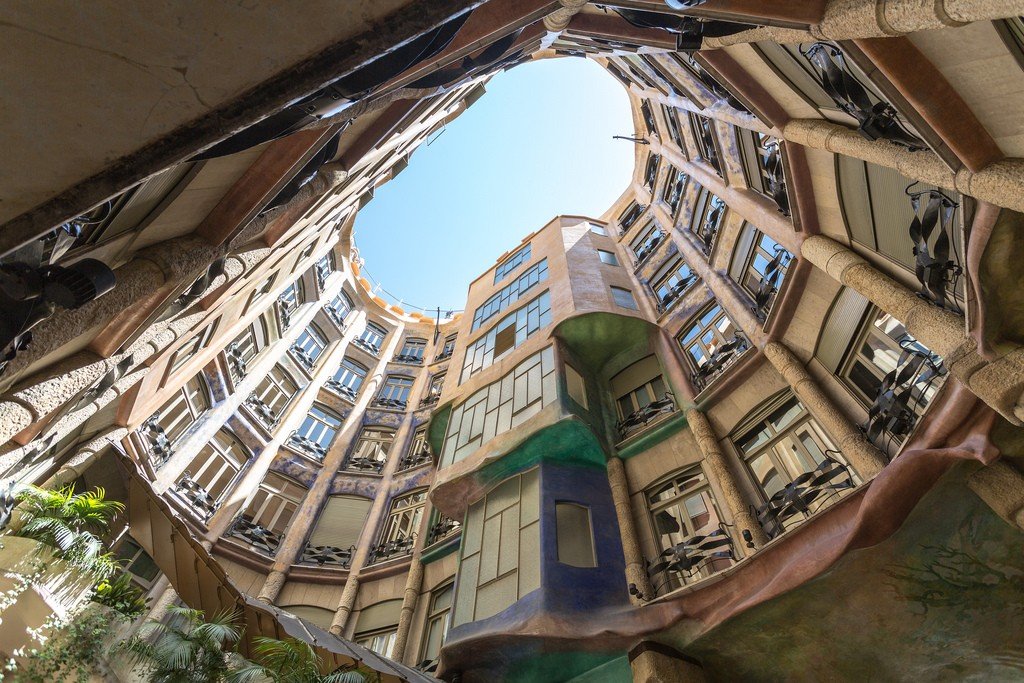
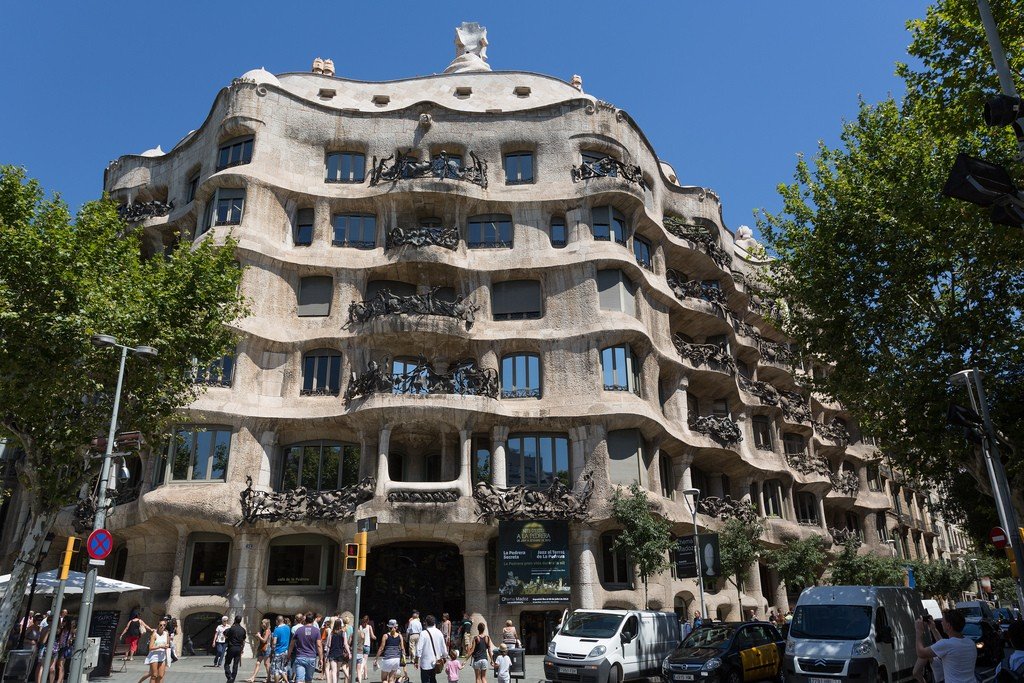
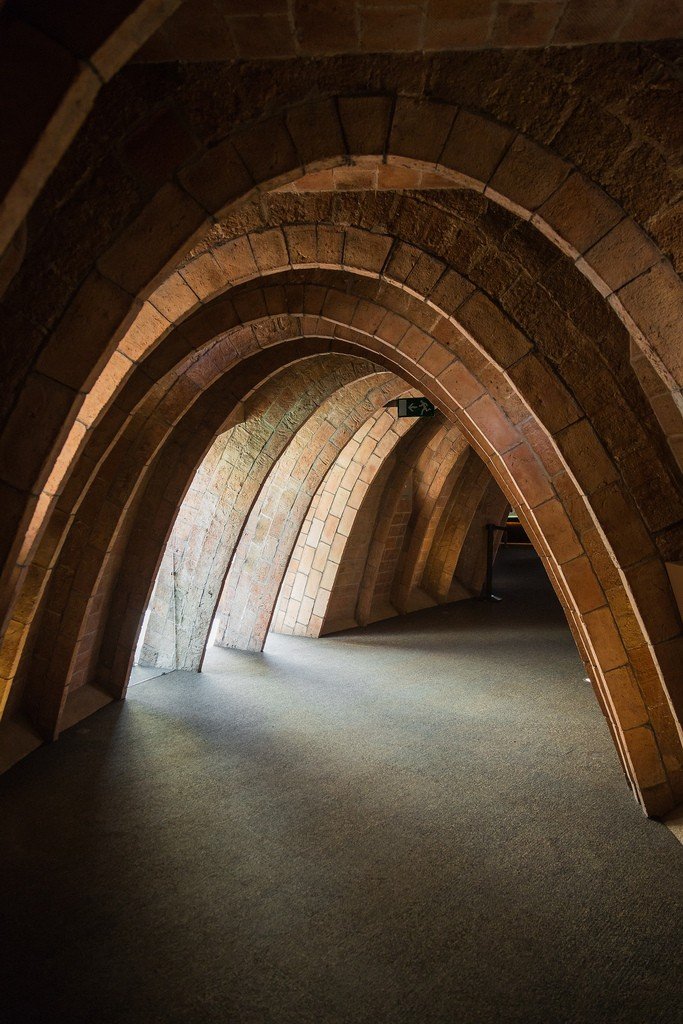
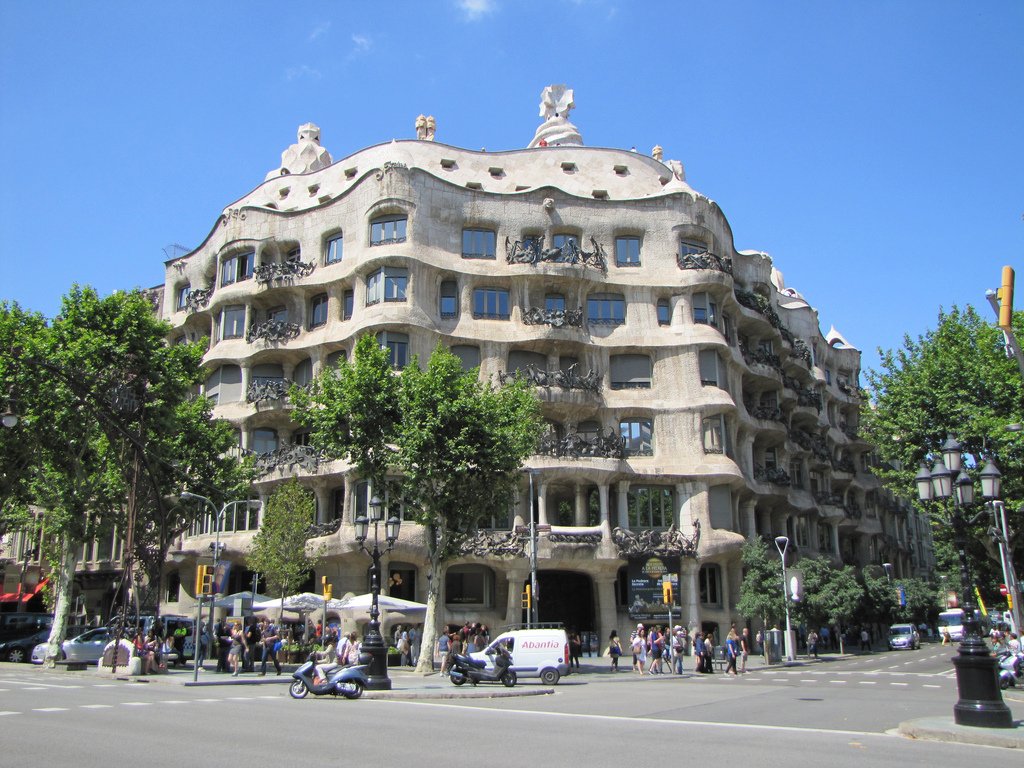
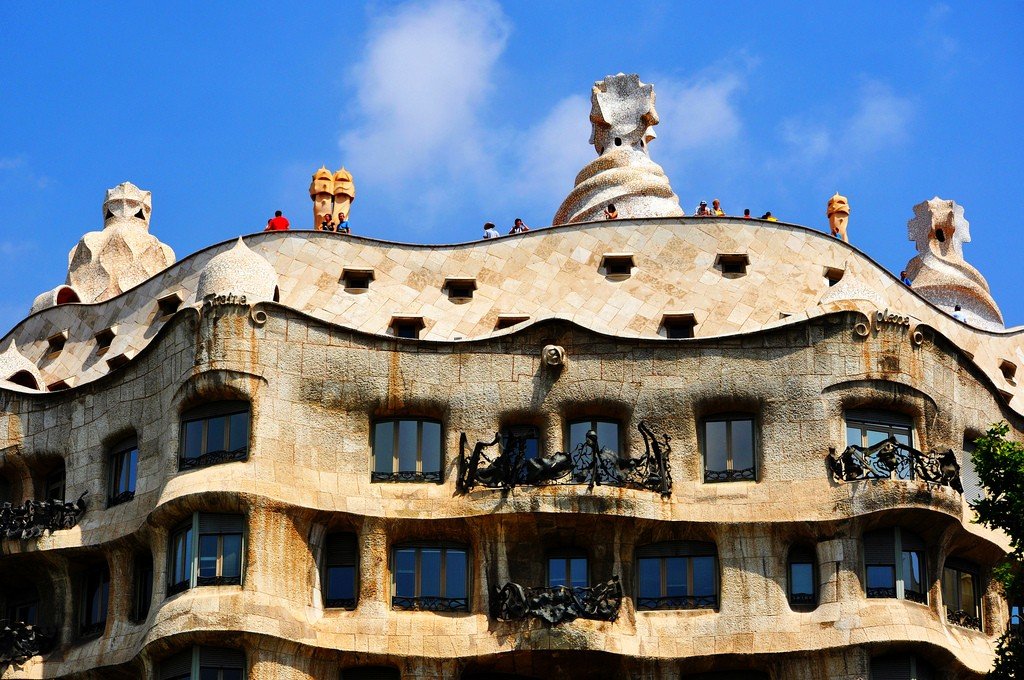
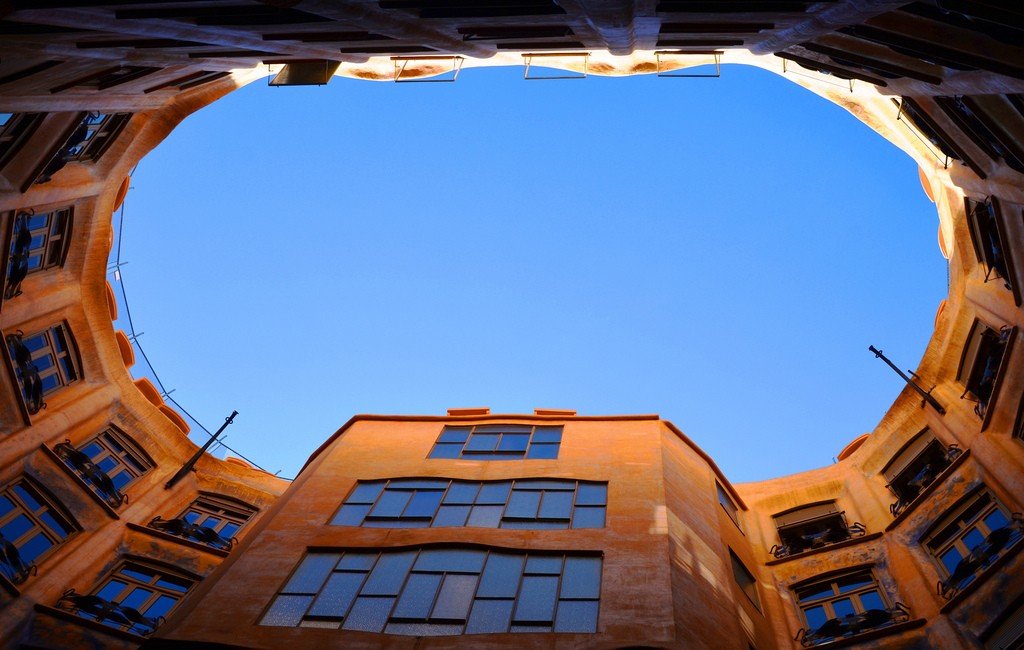
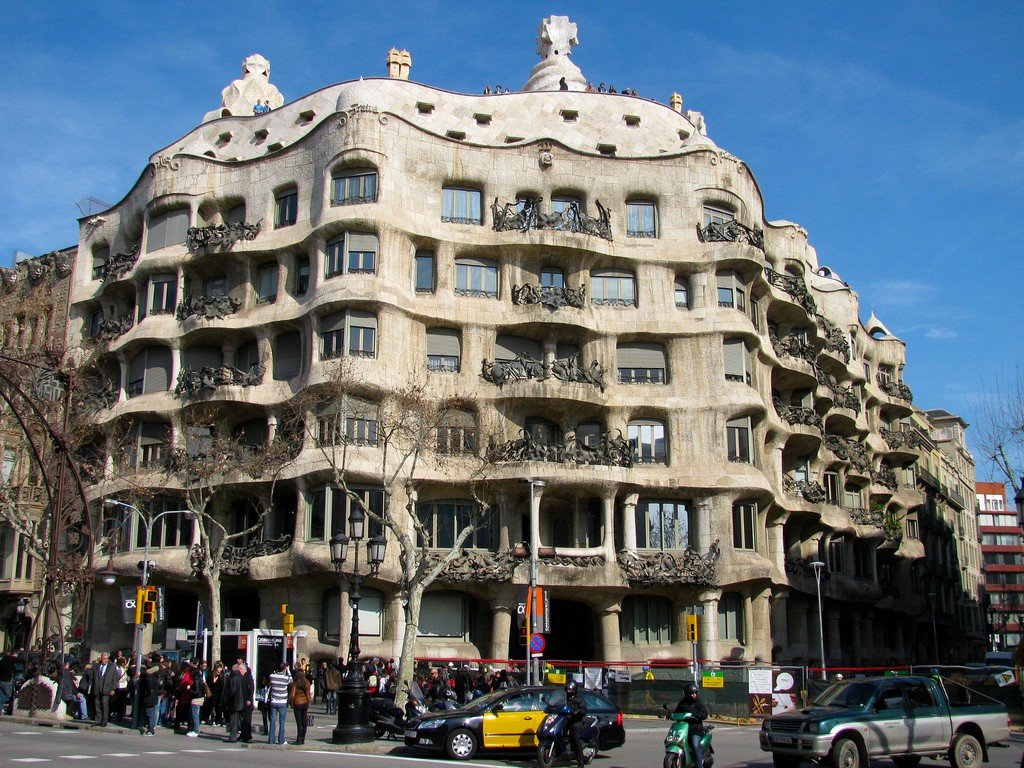
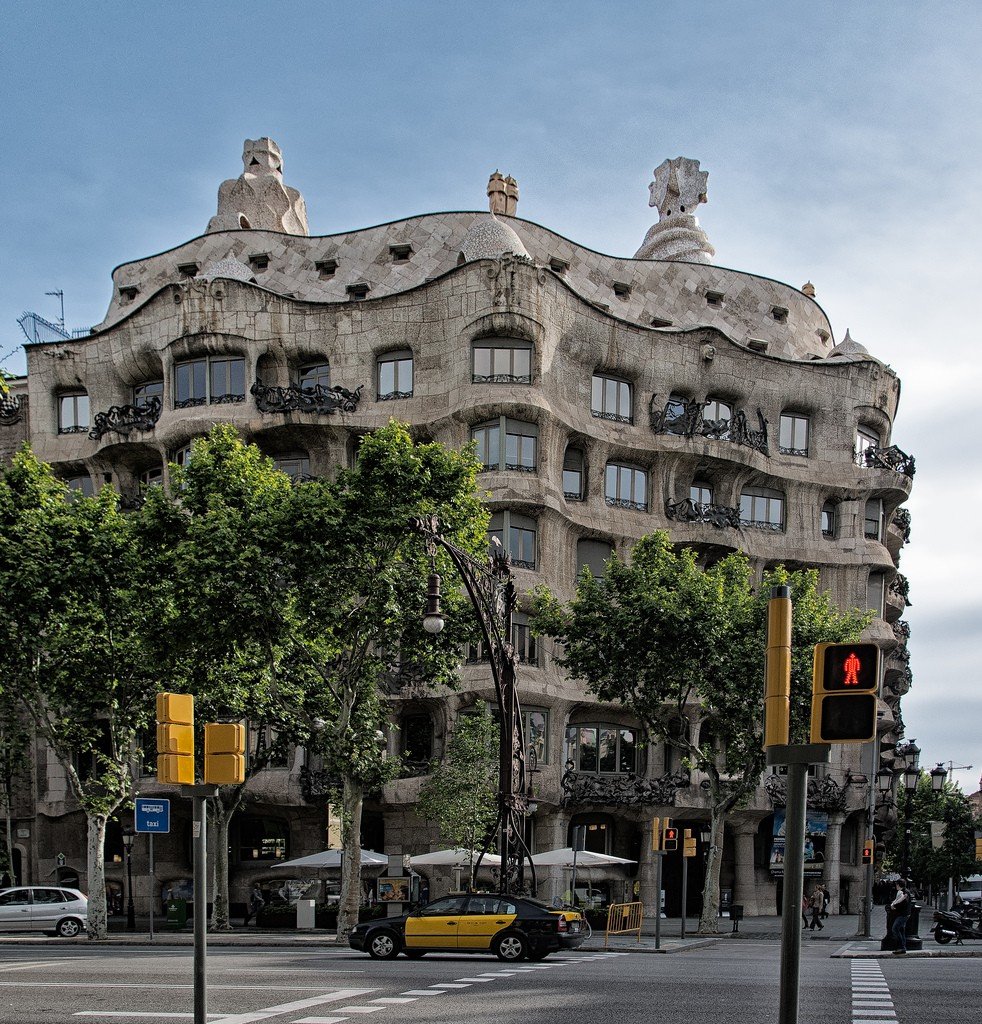
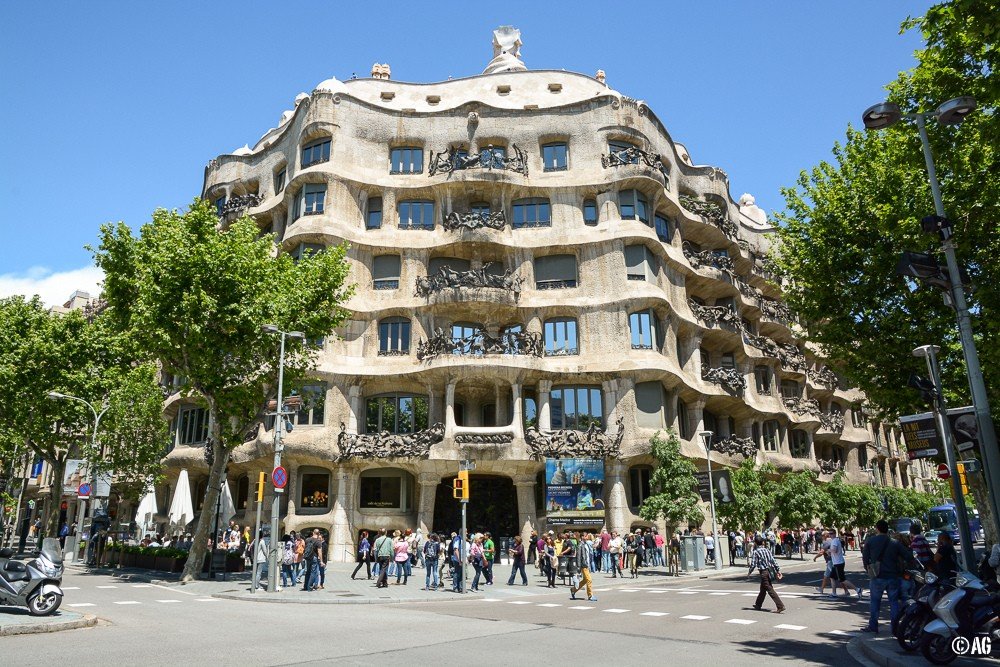
- Highlights
- The House of Mila – Inspired by Nature
- Bold ideas realized in the House of Mila
- Casa Mila today
- Visiting Casa Mila
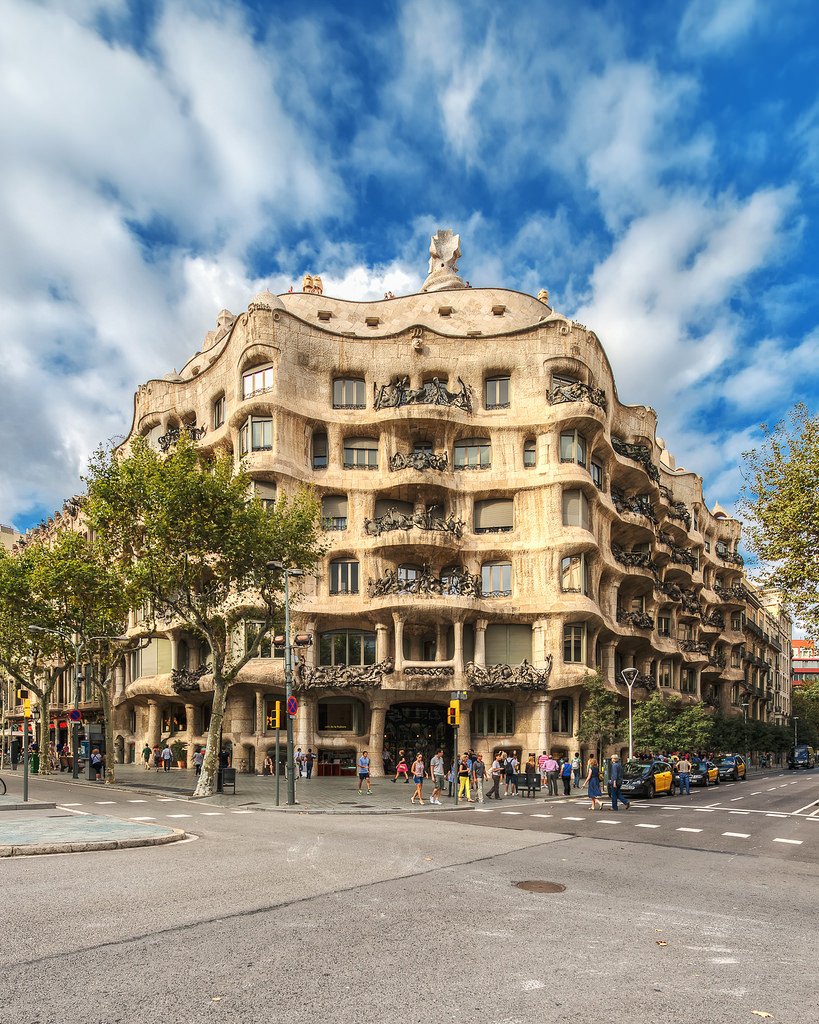
The property owes its name to its clients: the tycoon Pere Mila i Capes and his wife asked Gaudi to build them a house that would amaze and surprise them. Needless to say, the results exceeded all expectations – Casa Mila turned out to be more than extravagant. It is noteworthy that this was the architect’s last secular brainchild: in the future he fully devoted himself to the construction of the Sagrada Familia temple.
.Gaudí himself was not involved in the completion of the project. In 1909 there was a disagreement between him and the clients, and the architect refused to continue to lead the construction, and the promised fee he had to demand through the court.
Interestingly, the owners of the new house had to pay a large sum of money after the construction was finished: Casa Mila was too high and wide and exceeded the existing norms of the time, so they were fined.
.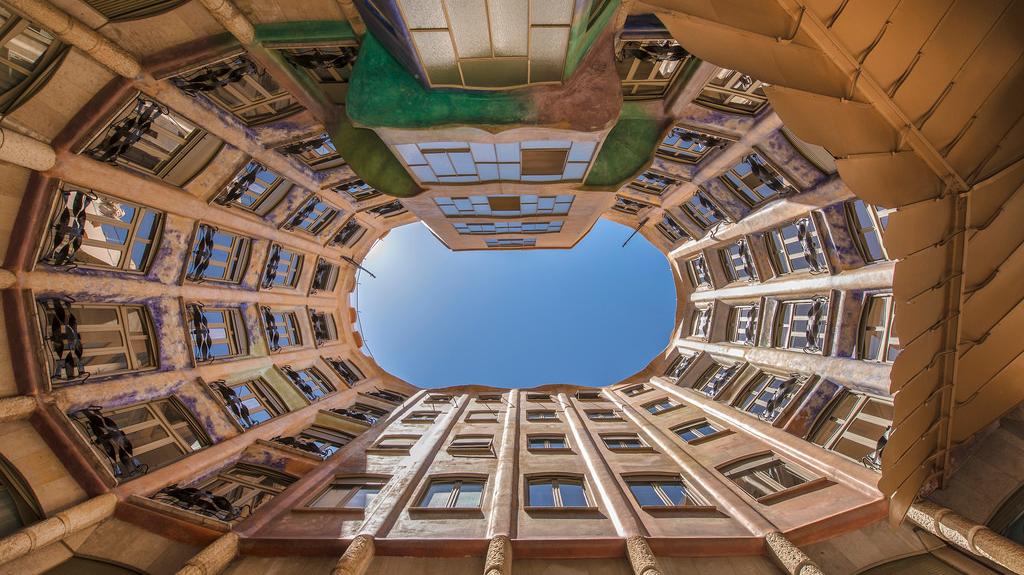
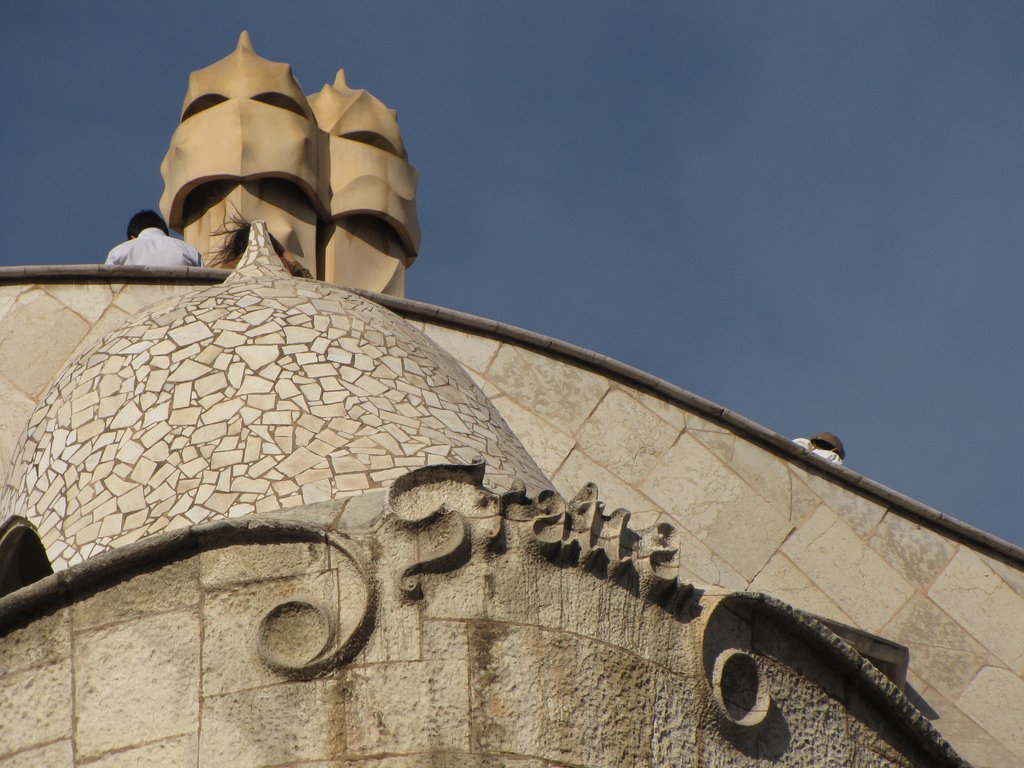
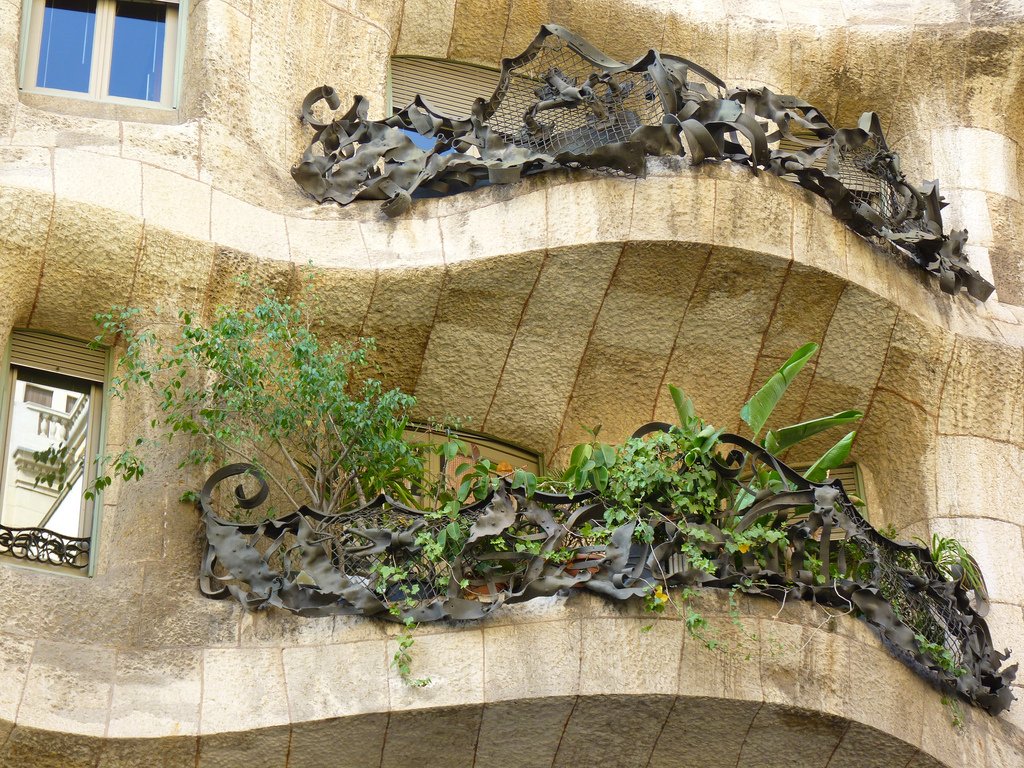
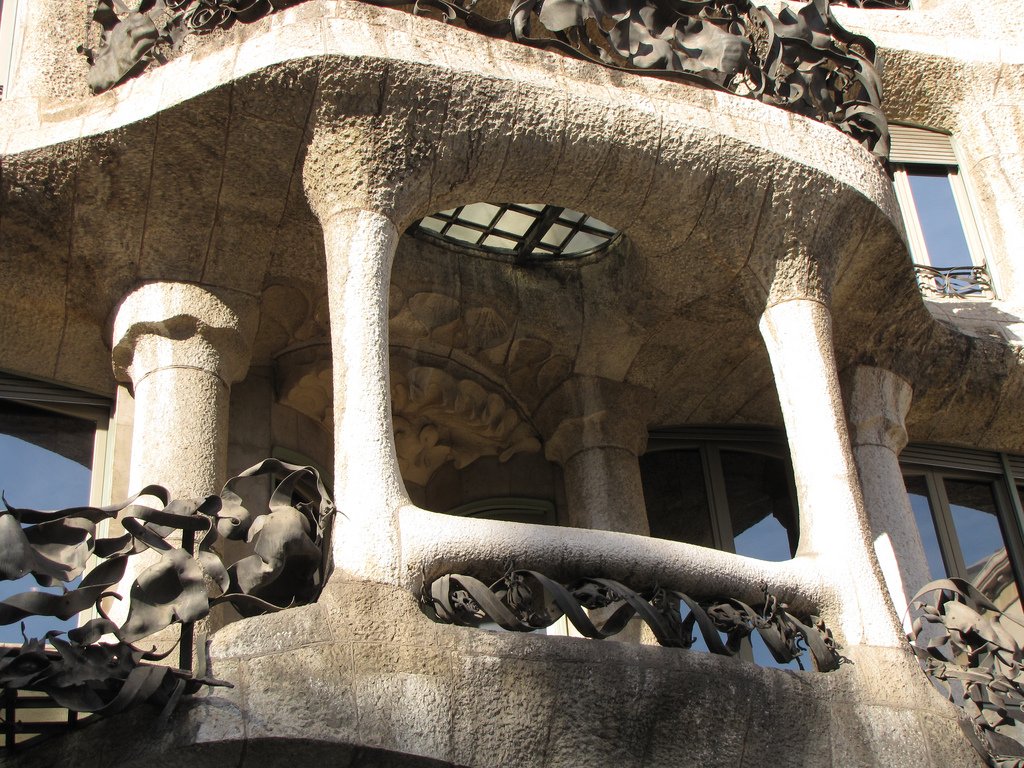
Dom Mila – inspired by nature
‘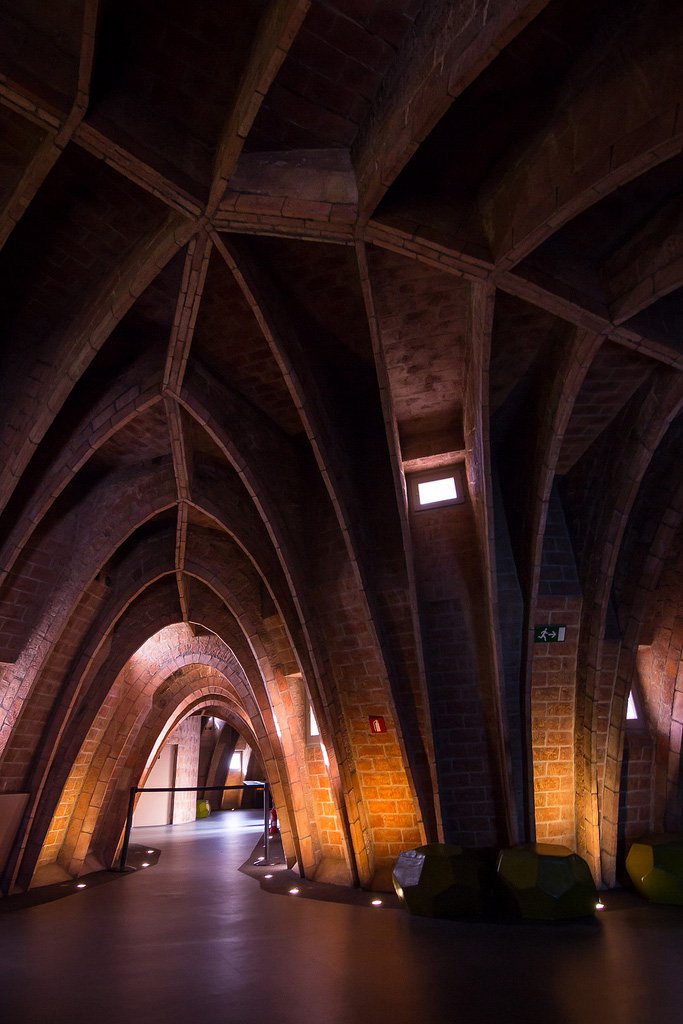
Casa Mila has as many as three interior patio courtyards. They are designed to keep the inside of the house bright. One of them is circular in shape and the other two are elliptical. The windows of the utility rooms face here, while the living rooms look out onto the street. The walls are decorated with colorful paintings, mostly of vegetal and mythological themes, and twisted staircases with wrought iron railings seem to wrap around them from the inside.
.’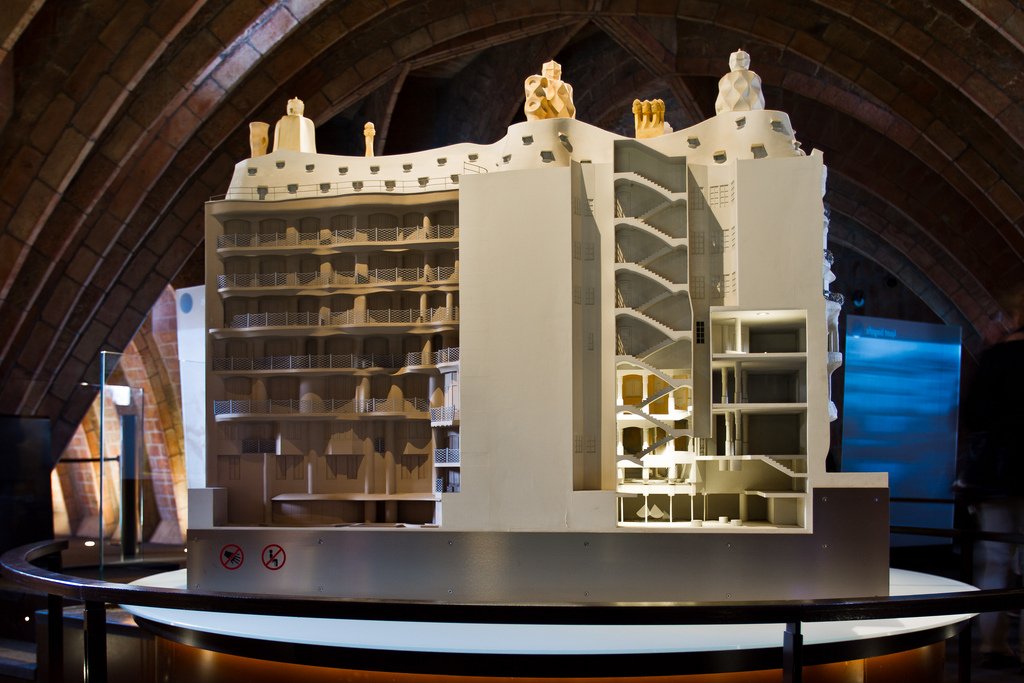
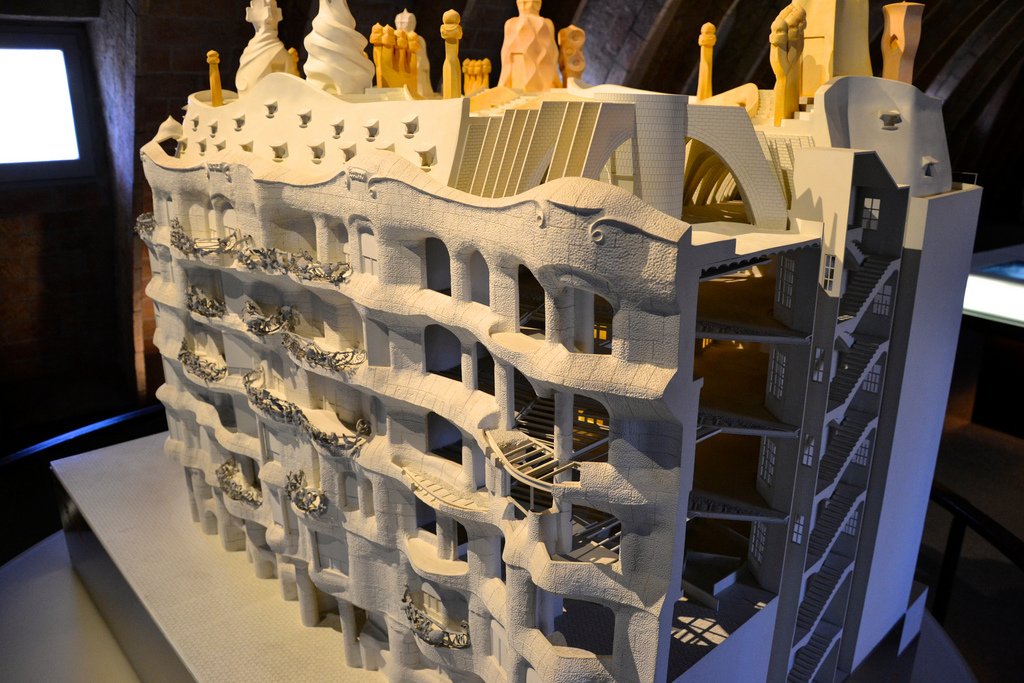
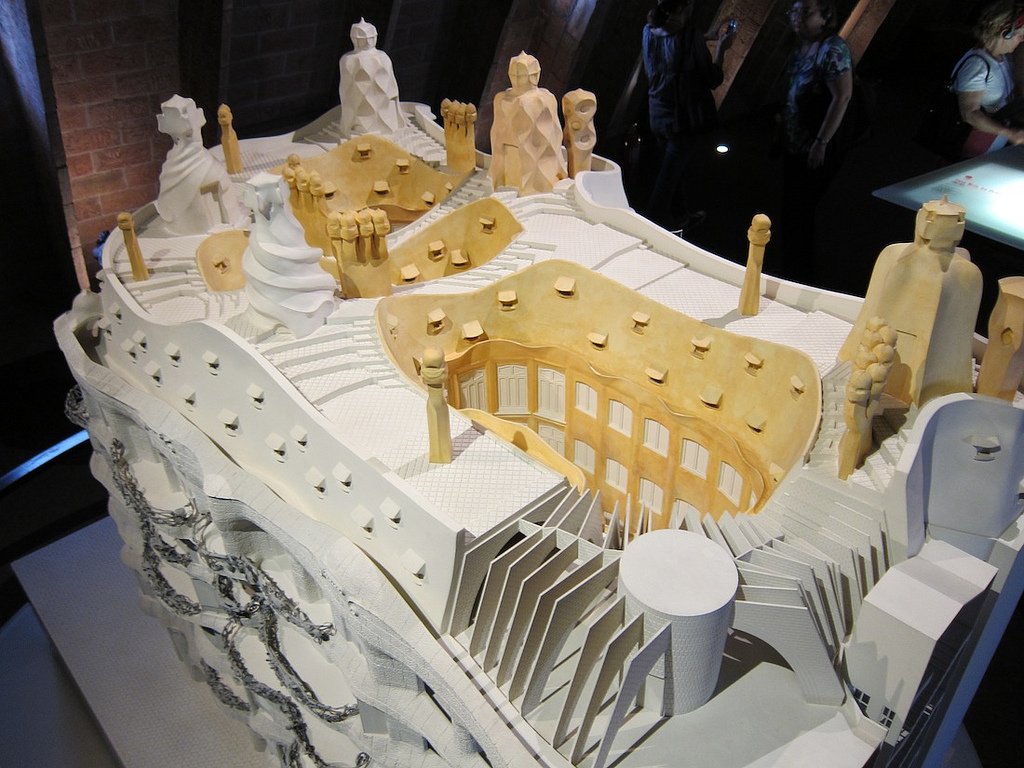
Of particular interest in Casa Mila is the attic located on the 7th floor. Once used as a laundry drying room, it now houses a mini-museum dedicated to Gaudi’s work. The roof is supported by arched vaults made of brick – there are 270 of them in total. Thanks to this method, the architect managed to avoid bulky beams, which are usually found in houses of the time. As in the whole building, everything here twists and floats, which further strengthens the associations with the sea or forest.
.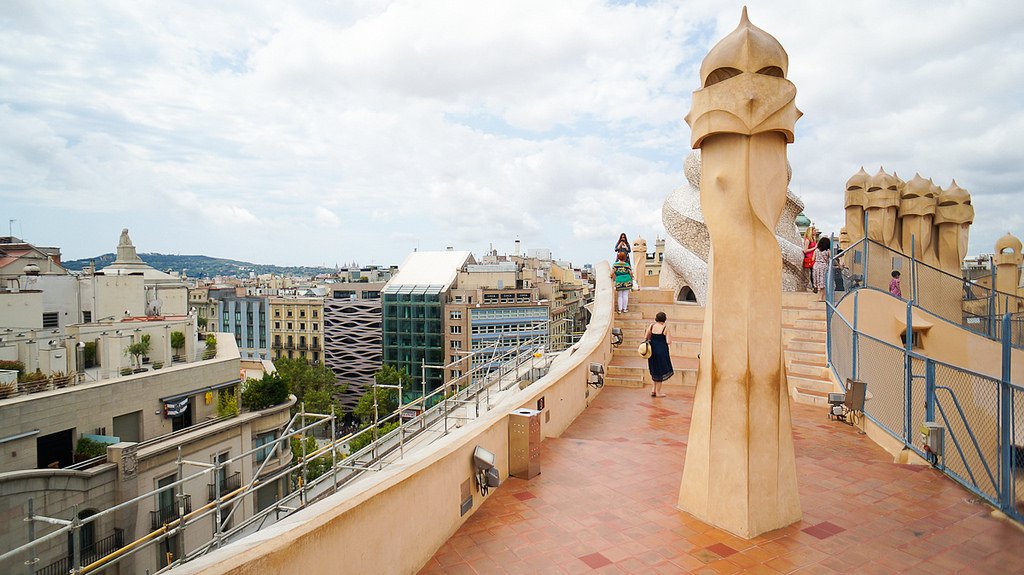
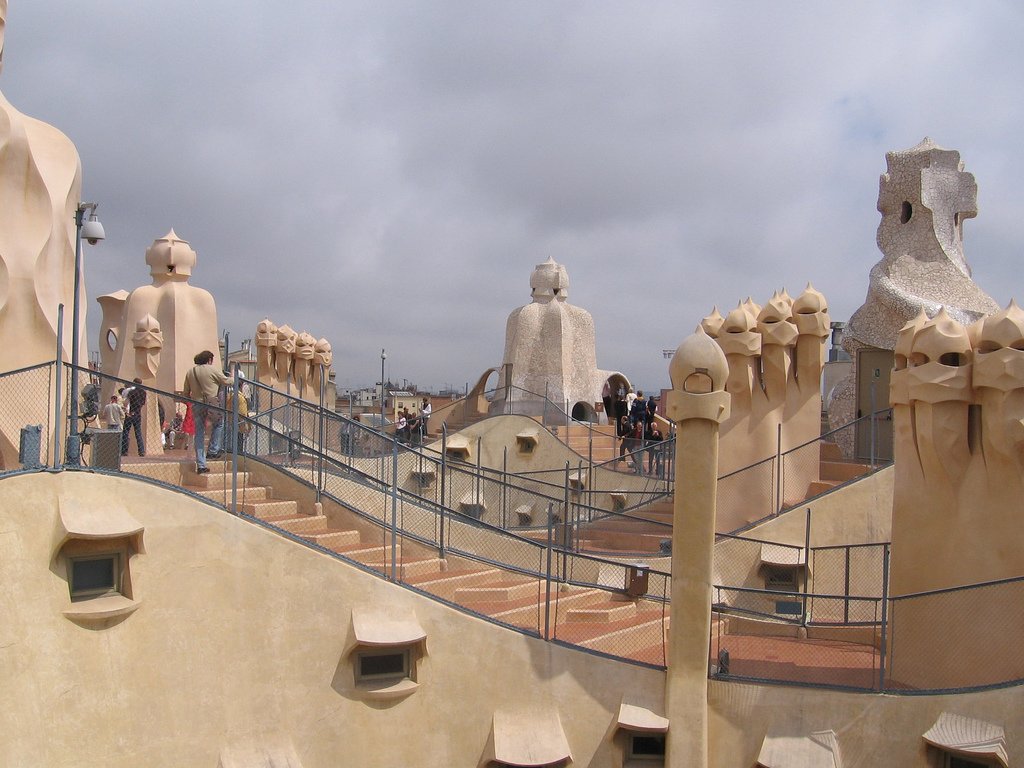
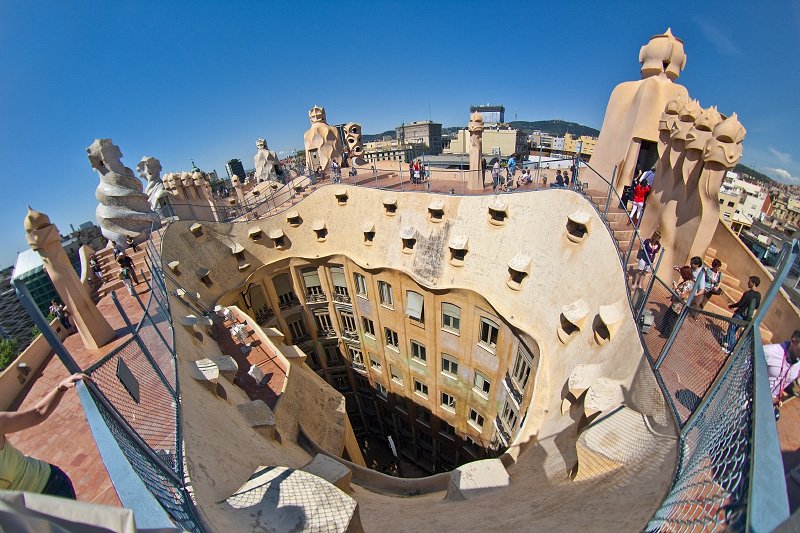
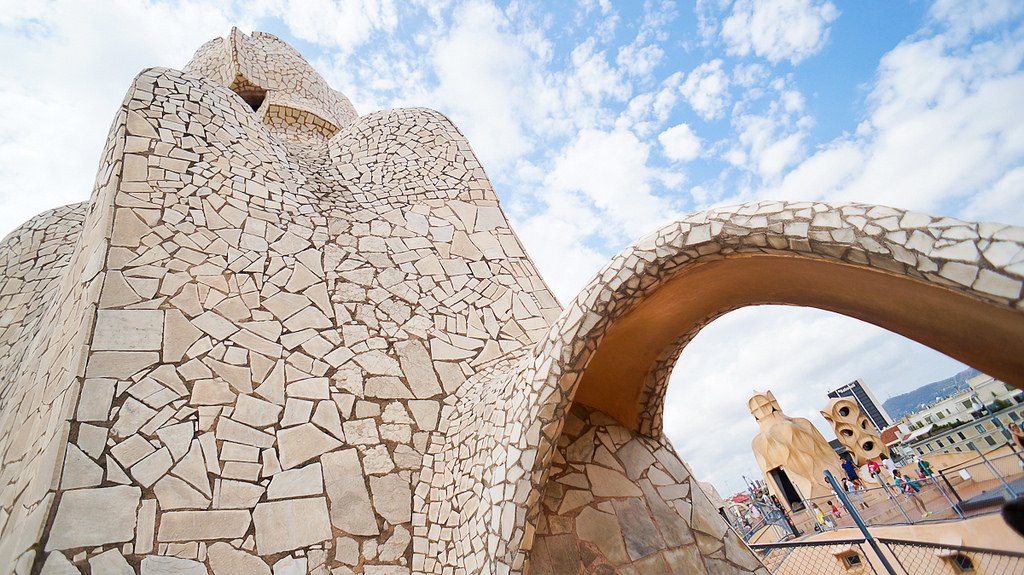
The museum’s exposition consists of three-dimensional models, drawings, sketches, and photographs of the house. It also contains objects from which Gaudí drew inspiration: fruits, shells, and even animal skeletons. Thanks to the exhibition, visitors can see the most characteristic features of the author’s style.
.From the attic, a spiral staircase leads to the terrace. Twisted columns, conical turrets, decorated with colorful mosaics of pebbles, fragments of marble, ceramics, glass, a garden of sculptures – all this seems to take you to another world. At the same time, they are placed there not only for decoration: each of the elements has a practical function.
.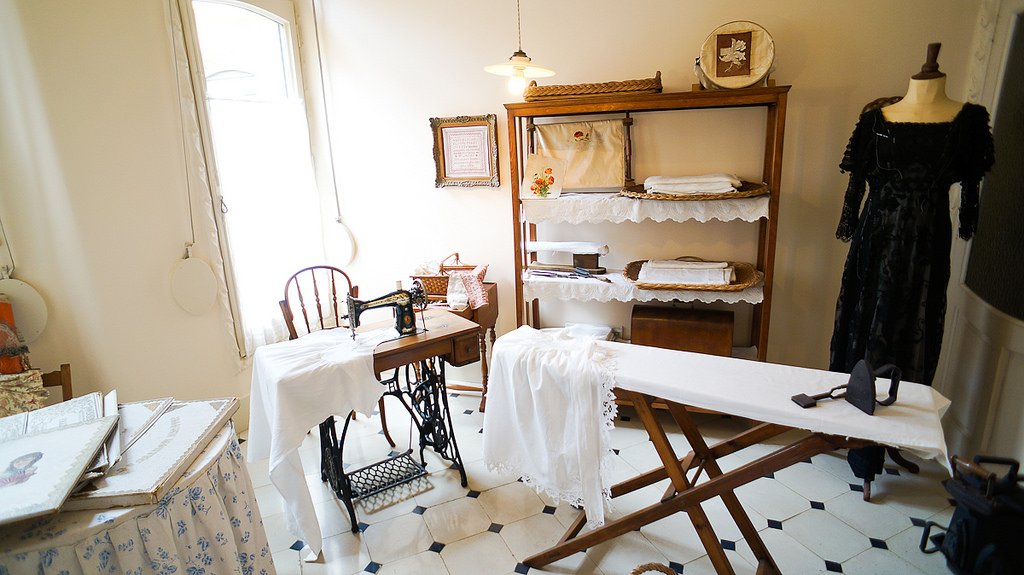
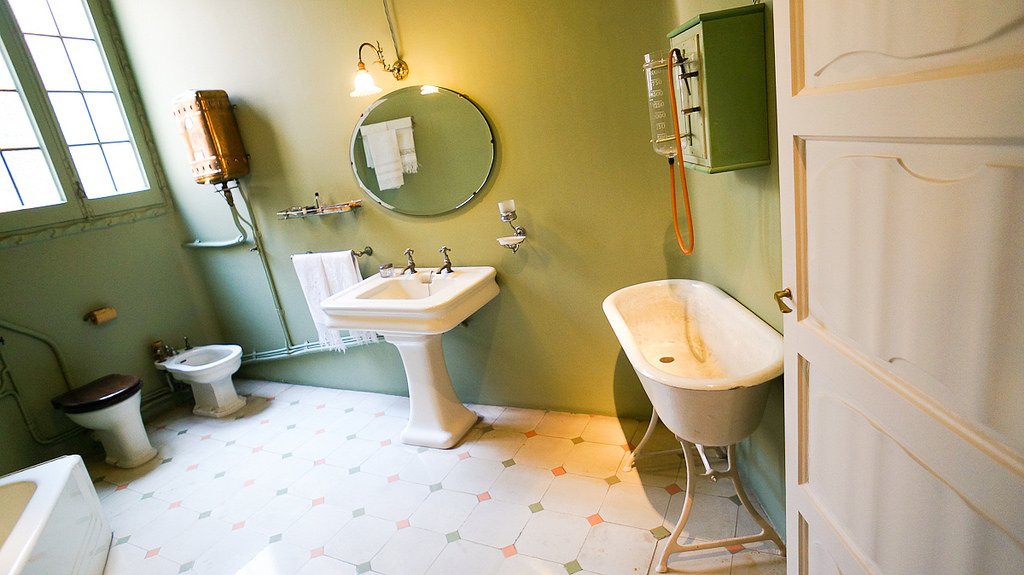
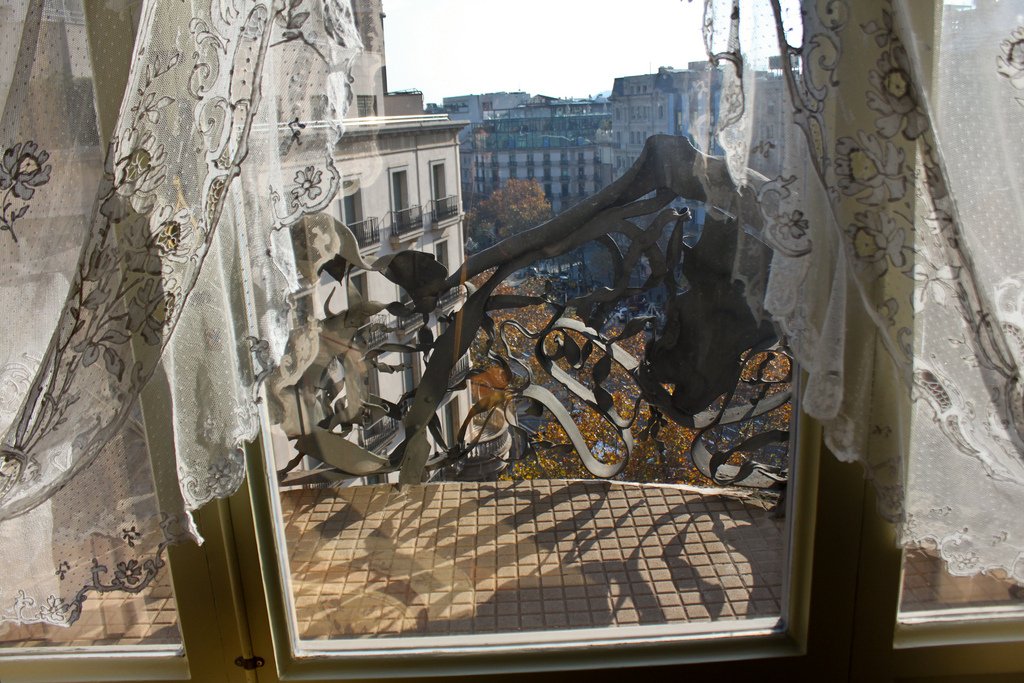
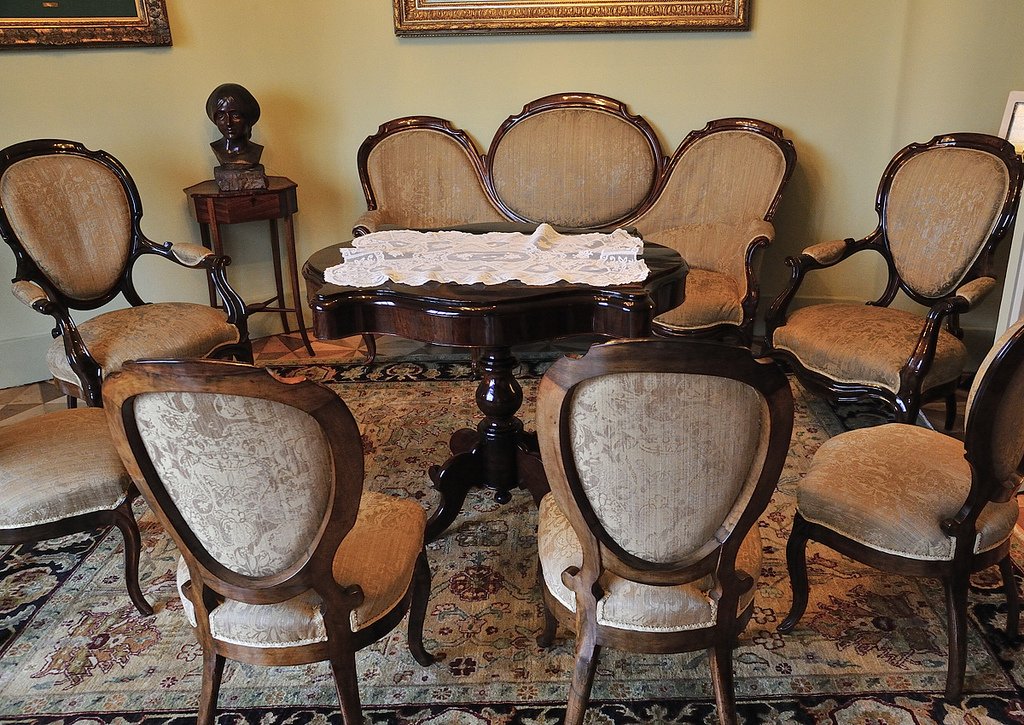
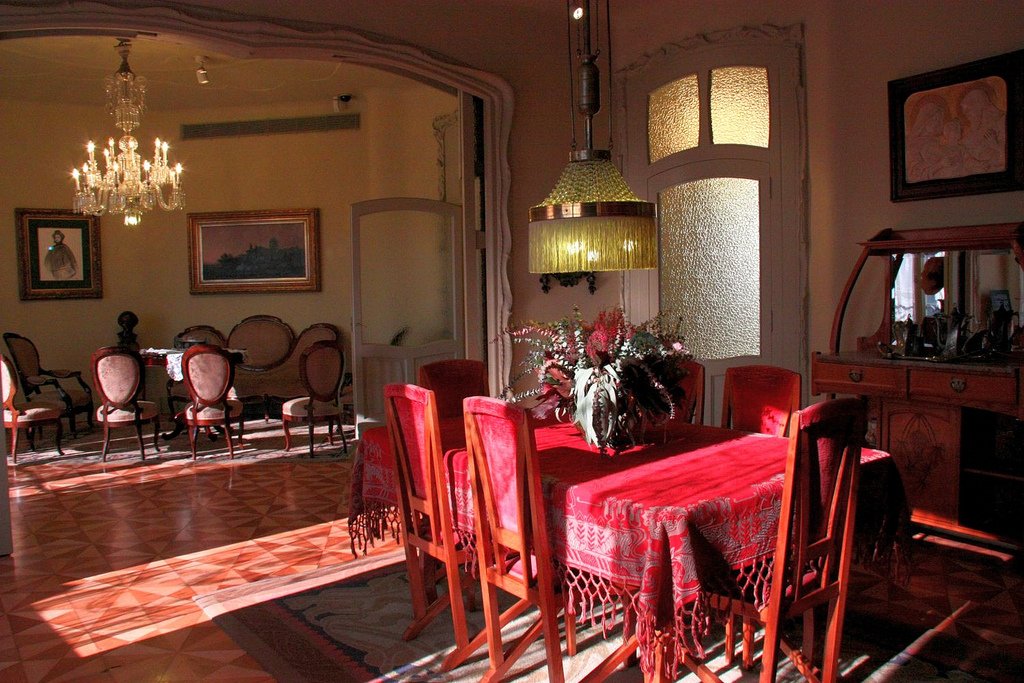
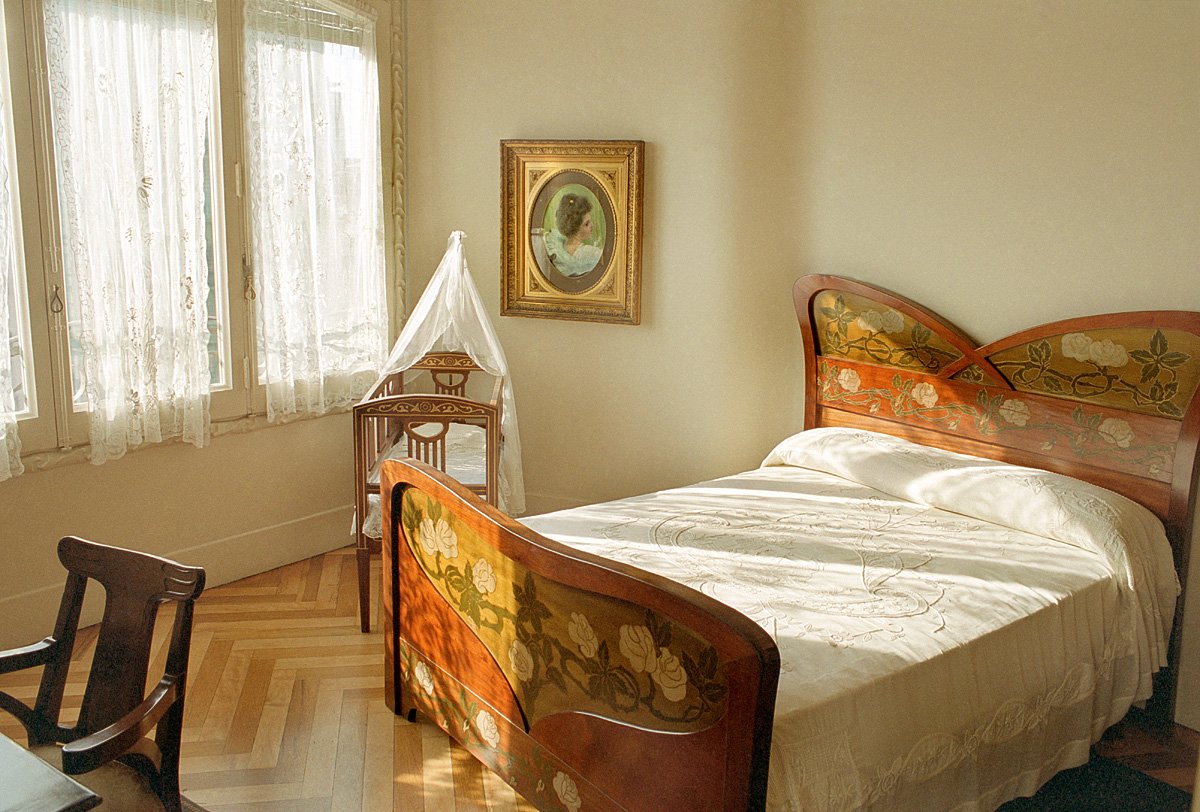
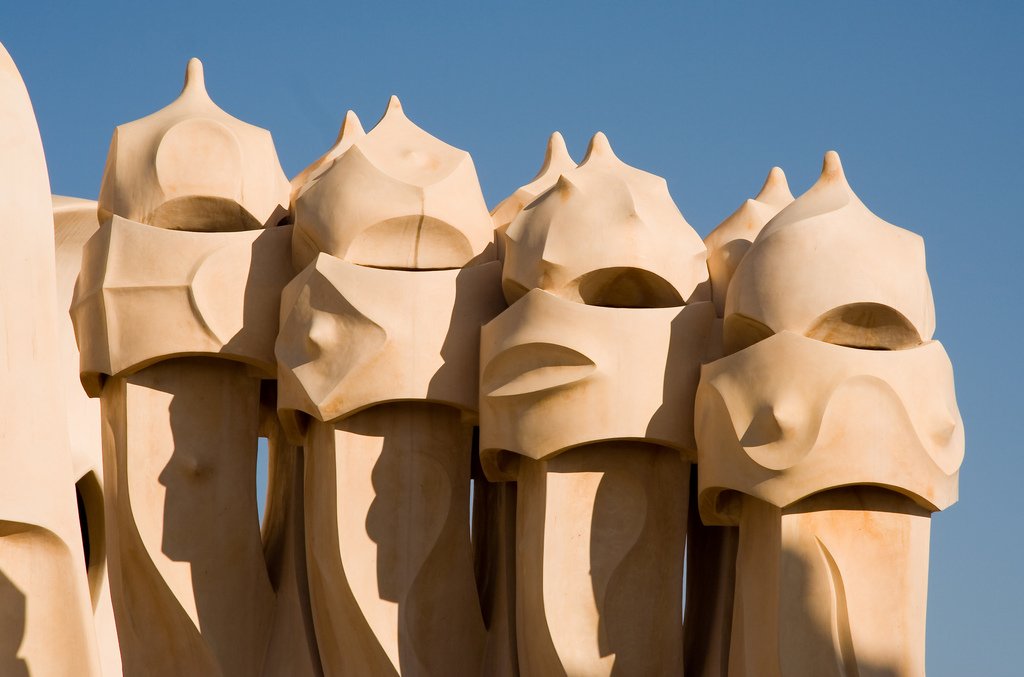
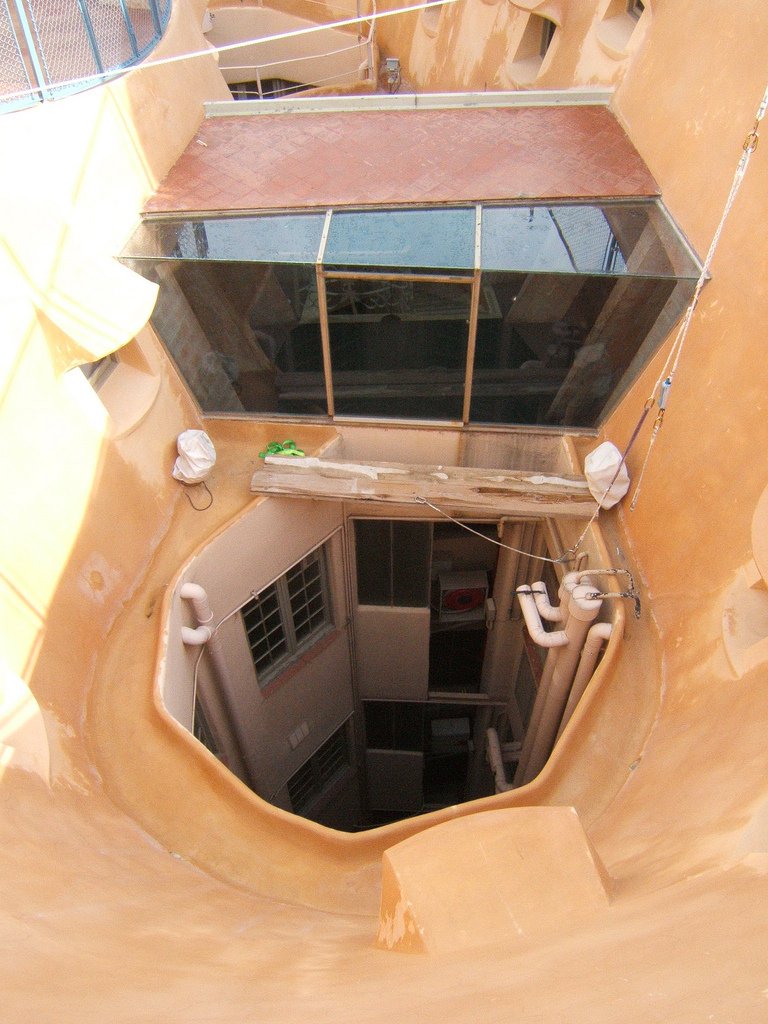
Bold ideas realized at Dom Mila
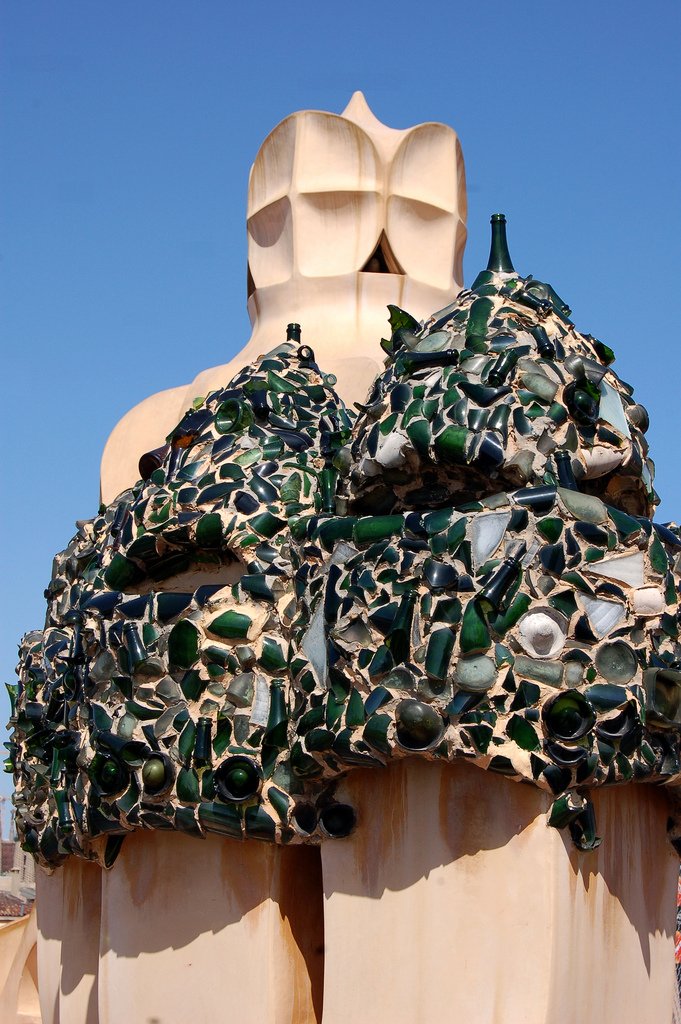
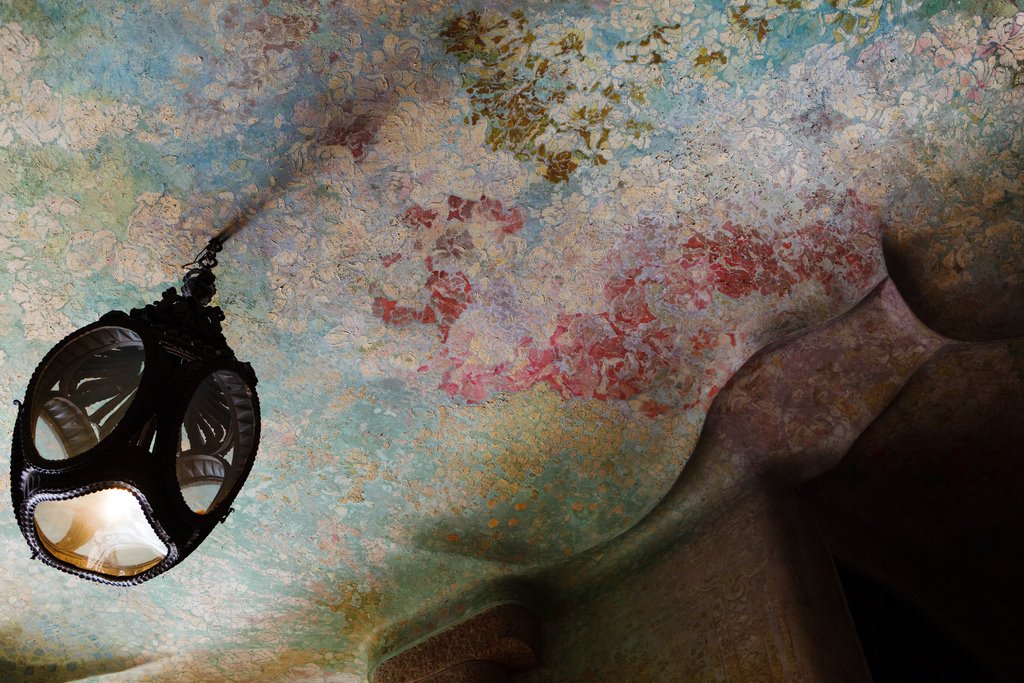
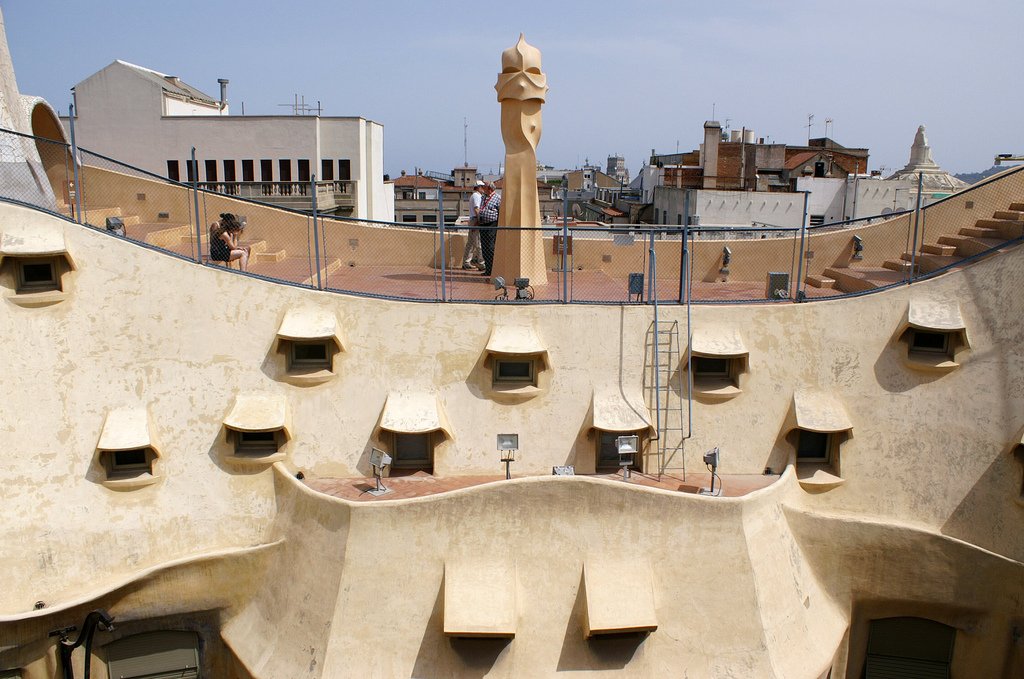
Visiting Casa Mila
Casa Mila is located at Passeig de Gracia 92. It can be reached by metro – the nearest station is Diagonal (lines L3 and L5). Also nearby is the Provença-La Pedrera stop, where buses Nos. 7, 16, 17, 22, 24 and V17 and the FGC train run.
.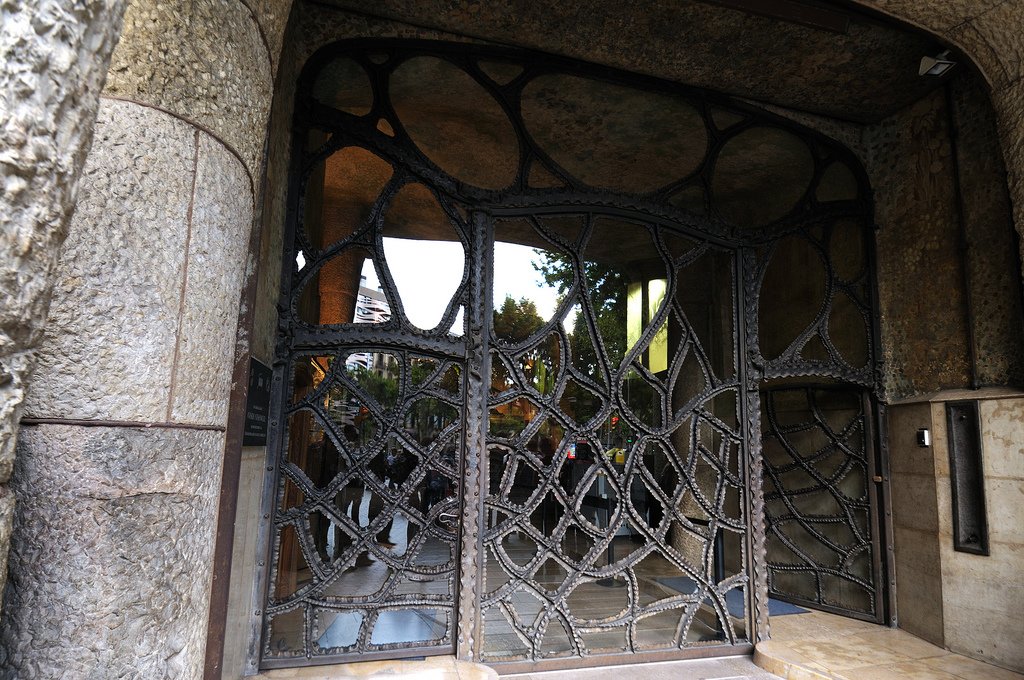
Casa Mila is open to the public daily. Opening hours:
.- November through February – 9:00 a.m. to 6:30 p.m.;
- March through October – 9:00 a.m. to 8:00 p.m.; .
- December 25 and 26, January 1 and 6 – from 9:00 a.m. to 2:00 p.m.;
- In addition, there are evening sessions – from 20:00 to 00:00.
The ticket price for an adult is 20,50 €, for students 16,50 €, for children between 7 and 12 years old 12, 25 €. Bus Turistik booklet holders can expect a 10% discount. Tickets can be purchased at the museum box office or online at https://tickets.lapedrera.com/site/LaPedrera/. In the second case, you will not have to stand in a long queue. You can also pick up a detailed audio guide in Russian for a few euros at the entrance.
.